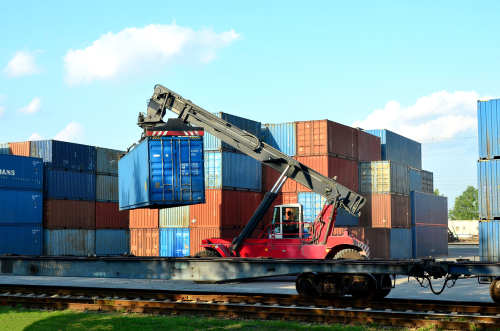In the realm of intermodal transportation, the integration of various modes of transport is paramount to the seamless movement of goods across vast distances. In this article, we will provide a comprehensive overview of the key modes of transport utilized in intermodal systems, highlighting their unique characteristics, strengths, and contributions to the global supply chain.
Rail Transportation:
Rail transportation serves as the backbone of many intermodal networks, offering unparalleled capacity, efficiency, and reliability for long-haul freight movements. Key characteristics of rail transport in intermodal systems include:
- High Capacity: Railroads can handle large volumes of freight, making them ideal for transporting heavy and bulk commodities over long distances.
- Intermodal Terminals: Rail intermodal terminals serve as vital hubs for transferring containers and trailers between trains and other modes of transport.
- Environmental Benefits: Rail transport is inherently more fuel-efficient and environmentally friendly compared to other modes, making it a preferred choice for sustainable freight movement.
Trucking:
Trucking provides essential last-mile connectivity and flexibility within intermodal transportation networks, complementing the long-haul capabilities of rail and other modes. Key characteristics of trucking in intermodal systems include:
- Last-Mile Delivery: Trucks facilitate the pickup and delivery of freight to and from rail terminals, ports, and distribution centers, ensuring door-to-door service for shippers.
- Flexibility: Trucks can access locations that may not be directly served by rail or other modes, making them indispensable for reaching remote or urban areas.
- Time Sensitivity: Trucks are often used for time-sensitive shipments or JIT (Just-In-Time) deliveries, offering expedited transit times for critical cargo.
Ocean Shipping:
Ocean shipping plays a vital role in intercontinental trade, connecting continents and regions through vast maritime networks. Key characteristics of ocean shipping in intermodal systems include:
- Global Connectivity: Ocean vessels transport goods between major ports worldwide, linking manufacturing centers, consumer markets, and distribution hubs.
- Economies of Scale: Large container ships enable the cost-effective transportation of goods in massive quantities, driving down unit costs for shippers.
- Transit Time Variability: While ocean shipping offers cost-effective long-haul transportation, transit times can vary depending on factors such as weather, port congestion, and routing.
Air Cargo:
Air cargo transportation is reserved for high-value, time-sensitive, or perishable goods that require expedited delivery. Key characteristics of air cargo in intermodal systems include:
- Speed: Air transport offers unparalleled speed and agility, enabling goods to be delivered across continents in a matter of hours.
- High-Value Cargo: Air cargo is often used for high-value goods, perishable items, or urgent shipments where time is of the essence.
- Cost Considerations: While air transport is fast, it is also the most expensive mode of transport per unit weight, making it suitable for specific cargo types and industries.
The integration of multiple modes of transport is fundamental to the success of intermodal transportation systems. By leveraging the unique strengths of rail, trucking, ocean shipping, and air cargo, intermodal networks offer a comprehensive and efficient solution for meeting the diverse needs of shippers and consumers in the global marketplace. Understanding the characteristics and contributions of each mode is essential for optimizing supply chain performance and delivering value to stakeholders across the logistics spectrum.
